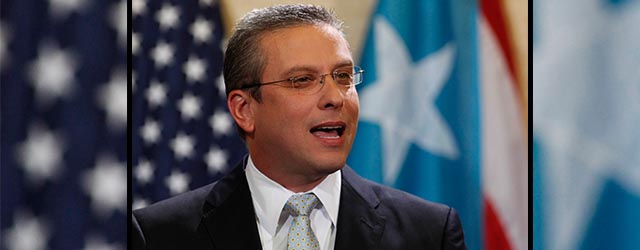He has become the face of Puerto Rico’s woes, warning in media interview after interview of its inability to pay its bills and serving as the island’s bearer of bad financial news.

Puerto Rico’s governor Alejandro García Padilla has arrayed before him a range of solutions to the island’s fiscal problems. Unfortunately, most have dubious political appeal and may be downright unpalatable to foreign multinationals operating on the island, or considering it.
That’s because Puerto Rico is $72.2 billion in debt, exacerbated by a worsening economy and shrinking job base. When $355 million of Government Development Bank notes come due on December 1, the world will be watching to see whether the country can avoid default.
In October the Obama administration asked Congress to amend the bankruptcy code to grant the island Chapter 9 status, which would allow it to restructure its finances. But that could further endanger the territory’s already-downgraded credit rating.
David Martin, managing attorney at law firm D.R. Martin and author of Puerto Rico: The Economic Rescue Manual, says other options could include challenging taxpayer-funded debt in court, which would rattle bond markets, or reducing tax exemptions for foreign investment. The hitch there, he says, is that the island’s model for economic development “is based on tax exemptions for foreign investment.”
Raising the excise tax from 4% to 10% would boost revenue by $3.5 billion to $4 billion over the current $2 billion. And a tax hike to 1% on properties worth $1 million or more could replace a so-called temporary tax based on 1958 valuations that currently produces $1 billion annually.
Padilla has unenviable choices to make in the coming months, and none of them will win him any new friends.


